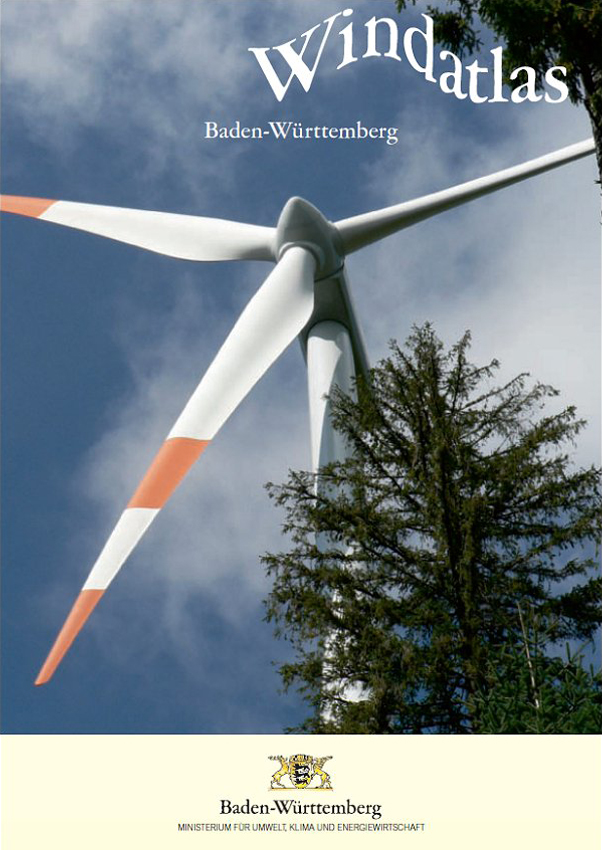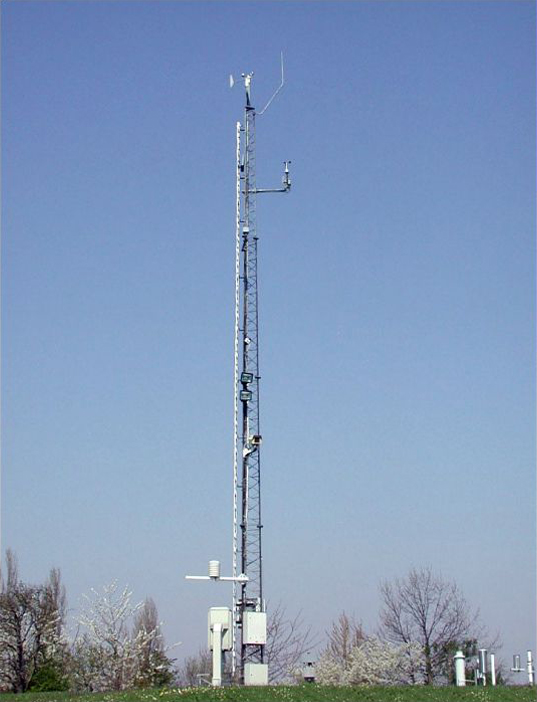|
|
| ENERGY-CONSCIOUS PLANNING AND ZONING |  |
| | | |
 3.4 Wind as Influence on Energy-Conscious Planning 3.4 Wind as Influence on Energy-Conscious Planning |
Like all meteorological parameters, the influencing factor of wind is not independent of solar radiation. Since the wind is able to exert mechanical forces of destructive magnitude and since its effects include, among others, the blowing, mixing, and transport of foreign substances in the air, this factor is of particular importance for urban development and the energy industry. This also pertains to various forms of wind energy usage, both traditional uses and those that have been perfected for today"s world.
Because of the relevance of the current situation, nevertheless a note about these activities. The state of Baden-Württemberg (Ministry of Environment, Climate and Energy) composed a windspeed atlas which shows the wind energy potential in Baden-Württemberg (see Fig. 3/24).
On 09.05.2012 the state parliament of Baden-Württemberg adopted a revised law for regional planning called Landesplanungsgesetz. The aim is to put more space at wind energy"s disposal. In the future the regional formations may only state priority areas for the use of wind energy. Exclusion areas are overruled with the beginning of the year 2013. The communities can now control the wind energy projects in pursuance the Federal Building Code (§ 35 (3) 3. BauGB).
Assistance and guidelines for the authorities and planning bodies to harmonise acting in this field exist in terms of the WINDENERGIEERLASS BADEN-WÜRTTEMBERG (2012).
It contains planning basics and hints and demonstrates the conditions for permitting wind energy plants.
In connection with energy-conscious planning and building in the sense of this booklet, however, the topic at hand is not that of wind energy usage, but rather the characteristic ability of the wind to significantly influence the heating requirements of interior spaces through the transfer and transport of heat. The wind also defines the air exchange rate of interior spaces via joints and leakages in exterior building components. In the interests of a comfortable setting, potentially undesirable airflows can often only be balanced out by the respective users of an interior space through excessive counter heating, which is why the ENEV (2007) limits the allowable gaps in and permeability of doors and windows (i.e. limitation of heat loss).
In DIN EN 12831 (Rules for Calculating the Heating Requirements of Buildings), the wind factor is taken into account through the parameters "location" (normal or open), "area" (strong or weak winds), and "type of building" (stand-alone or row building).
The average wind speed in Germany ranges from 2 m/s to 7 ms/s. Wind speeds have an influence on the consumption of heating energy. But: The better the heat insulation and the tighter the joint sealing (i.e. the better the building"s thermal insulation), the smaller the influence of wind speed. When extremely wind-exposed places are avoided, the wind has only little influence on heat loss, especially in the case of new buildings.
The following sections are intended to communicate the information necessary to evaluate a location with respect to its wind conditions. In the interest of energy-conserving planning, the goal is a location with as little wind and turbulence as possible.
It must be noted, however, that this aspect often competes with the interests of air pollution control and with the urban climatic question of optimal aeration. Even in the low-wind region of southwestern Germany, the argument for overcoming by means of sufficiently ventilated land surfaces the disadvantages of low air exchange such as air pollution, humidity, and frequent fog has great importance.
Special attention should therefore be given in the consideration of the energy-related wind factor to the avoidance of extremely unfavorable (i.e. especially windy) locations and overly wind-susceptible building forms. Through the evaluation of planning alternatives it should then be possible to reach compromises with other planning factors when necessary.
|
|
| | | |
 |
| Fig. 3/24: Wind Atlas Baden-Württemberg, Source: Ministry of Environment, Climate and Energy (2011) | | |
 |
| Fig. 3/25: Wind measurement device (bowl-and-cross anemometer) | | |
 |
| Fig. 3/25a: Wind measurements: Measured according to standard in 10 m height |
|
